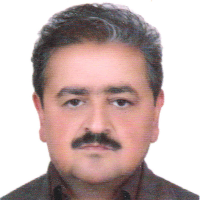Combined Effects of Radiation and Nitrogen Limitations on Competition of Two C4 Plants Foxtail Millet (Setaria italica L.) and Pigweed (Amaranthus albus L.)
Author(s):
Article Type:
Research/Original Article (دارای رتبه معتبر)
Abstract:
Introduction
Light is a vital component for photosynthesis and plays a significant role in the competitive ability of plants. The nitrogen response of competing plants may be affected by radiation availability and maximum potential growth rate, which determine N requirements. Shading reduces the light intensity, which leads to changes in the morphology, physiology, biomass, grain yield and quality of crops. Finally, shading stress delays flowering and decreases biomass and grain yield. Because photosynthesis is associated with dry matter accumulation, and light is known to limit carbon accumulation and nitrogen content, understanding these processes in weeds may provide insight as to their effects on crop production, help to predict their occurrence, and ultimately provide the needed information for their management.Materials And Methods
In order to evaluate foxtail millet competition with pigweed at different levels of radiation and nitrogen, two separate experiments in split plot arranged in randomized complete block design with three replications were conducted in 2015 at the Research Farm of Birjand University. Texturally, the soil was loam, with 8.16 pH, 0.03% total N, 12 ppm available P and 250 ppm available K. The experiment was laid out in a split-plot design with three replications having three shade levels (0, 41 and 75% shade) in main plot and three pigweed density (0, 12 and 24 plant per meter square) in subplots in two separate experiments, one under nitrogen application and the other without it. In 0% shade treatment, sunlight was allowed to fall over the millet and pigweed without any barrier. In 41% and 75% treatments, the light levels in the form of PAR were reduced using sheds nets. At the end of growth stage millet traits including plant height, spike length, peduncle length, stem diameter, number of leaf, lodging, grain yield and biomass and pigweed traits such as plant height, number of Lateral branches, number of seed per plant and biomass were measured. Data analyses were performed using two-way analysis of variance (ANOVA) by SAS 9.1 software. Means of treatments were compared between nitrogen, shade treatments and pigweed densities according to protected least significance differences (LSD) test at the 5% level.Results And Discussion
Nitrogen had a significant effect on all millet traits except for peduncle length and biomass and also on pigweed height. Nitrogen led to significant increase in plant height, lodging percentage, number of leaf, spike length and grain yield of millet and also pigweed height. Shading had a significant (P Conclusions
This research provides information on how pigweed and foxtail millet respond to reduced radiation and low nitrogen environments. Under low-radiation environments, pigweed produced less seeds that would limit the replenishment of the next years seed bank. Therefore, production practices such as narrow rows that reduce radiation availability would be helpful in reducing pigweed infestations. Once a dense canopy is formed, vegetative growth and the reproductive potential of pigweed seedlings are severely restricted. A uniform dense crop canopy is of paramount importance in developing an integrated approach to control this weed because any gaps in the canopy allowing light penetration will result in a rapid weed growth and prolific seed production. Further, nitrogen deficiency seems to decrease weed competition ability and seed production leading to less infestations.Keywords:
Language:
Persian
Published:
Journal of plant protection, Volume:31 Issue: 4, 2018
Pages:
662 to 675
magiran.com/p1795080
دانلود و مطالعه متن این مقاله با یکی از روشهای زیر امکان پذیر است:
اشتراک شخصی
با عضویت و پرداخت آنلاین حق اشتراک یکساله به مبلغ 1,390,000ريال میتوانید 70 عنوان مطلب دانلود کنید!
اشتراک سازمانی
به کتابخانه دانشگاه یا محل کار خود پیشنهاد کنید تا اشتراک سازمانی این پایگاه را برای دسترسی نامحدود همه کاربران به متن مطالب تهیه نمایند!
توجه!
- حق عضویت دریافتی صرف حمایت از نشریات عضو و نگهداری، تکمیل و توسعه مگیران میشود.
- پرداخت حق اشتراک و دانلود مقالات اجازه بازنشر آن در سایر رسانههای چاپی و دیجیتال را به کاربر نمیدهد.
In order to view content subscription is required
Personal subscription
Subscribe magiran.com for 70 € euros via PayPal and download 70 articles during a year.
Organization subscription
Please contact us to subscribe your university or library for unlimited access!



